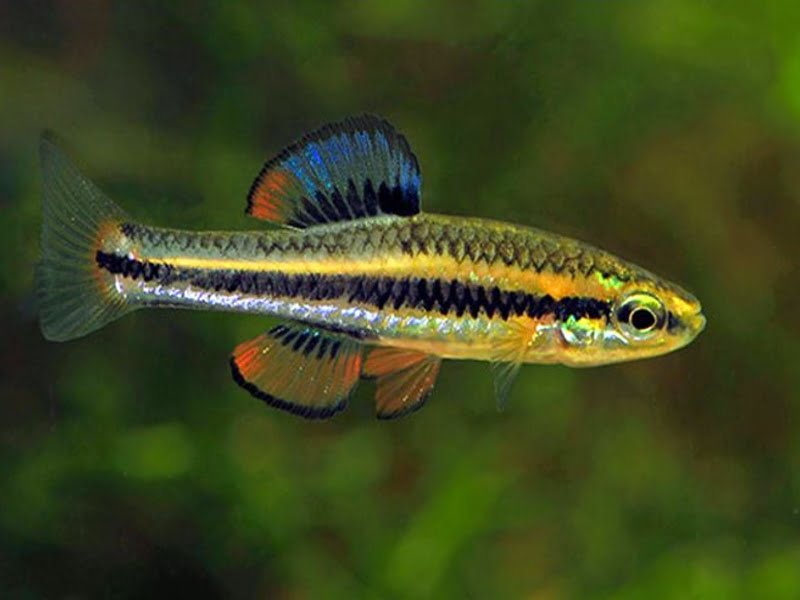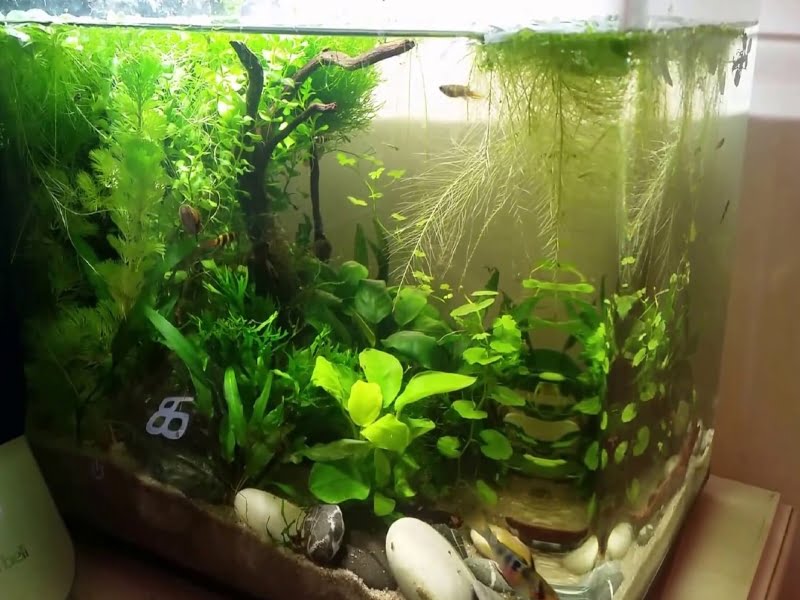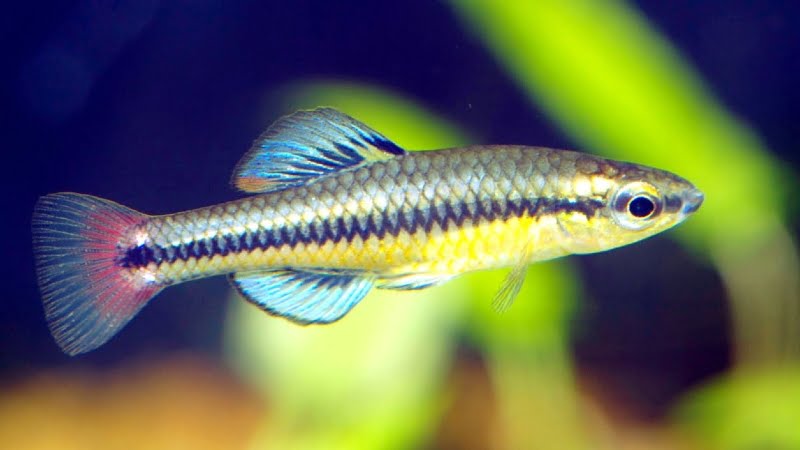Bluefin Killifish originates in North America, along Atlantic Coast or southeastern Alabama in the Chipola River drainage, and is a freshwater type. It is not hard to see this vastly colorful and tiny-bodied Killifish that quickly catch your heart in each aquarium store.
Did you decide to have some of this beautiful and engaging Killifish? Or plan to own them in the future? If so, this article indeed provides all tips for Bluefin Killifish care!

Basic Information That All Bluefin Killifish Hobbyists Should Know
First, let’s review some basic information about them.
- Common name: Bluefin Killifish
- Scientific name: Lucania goodei
- Order: Cyprinodontiformes – Family: Fundulidae (Topminnows)
- Size: The adult male can reach 6cm (2.4″) long, the same body size as the female.
- Habitat: Bluefin Killifish can be found in a wide variety of freshwater habitats, but it is most commonly found in little streams. Ponds, lakes, sloughs, and backwaters of densely vegetated streams have little or no current. It is possible to find them in waters with a moderate salinity level, especially in spring habitats (up to 10.3 ppt). They usually swims quite a distance under the water’s surface.
- Diet: In terms of diet, Bluefin Kilies are omnivores, which consume both plant and animal things.
- Status: Founded in California, North Carolina, and South Carolina.
- Lifespan: 2 years in a wild environment.
In general, rarely do Bluefin males are bigger than females. This species has a long body that looks like a minnow. Like other aquarium fishes, a big difference in sex between men and women because of the unpaired fins. The overall color of this fish is brown, but blue casts on their anal and dorsal fins only show up on males. These dorsal and anal fins are mostly blue, but at the base of each one, they have different amounts of red, yellow, or black markings. This draws attention to the adult male who is always on show.
Bluefin Killifish Care: The Guidelines
Tank setup & Water condition
Bluefin killifish does better in aquariums with many plants. Your Bluefin killifish tank will benefit significantly from adding Java moss, banana plants, and elodea. You know, they need space to swim freely, hide and forage in. In a species tank, where they may interact with their tank mates, they’ll be less shy and more lively.
A five-gallon tank seems enough for a couple of Bluefin. And don’t forget regular weekly water changes and maintain natural light. These guys are diurnal, so these tips are essential for making them be happiest Bluefins. A photoperiod of 12L:12D or 14L:10D is recommended.
Other recommendations for water:
- Between 6.5 and 7.5 is the ideal range for the water’s pH.
- The tank’s temperature should be kept between 75°F and 80°F to simulate subtropical conditions. That’s why it’s important to have a high-quality heater if you’re living in a polar climate zone.
- The tank water hardness should be between 5dH and 20 dH.

Feeding & Breeding
Bluefins are easy to breed. Because they’re omnivores, invertebrates such as mosquito larva, snails, and scuds are the preferred prey of bluefins, which prefer to eat them. Algae on aquatic plants can also attract bluefins. Frozen bloodworms are the best option if you have a finicky eater like a wild captured or pond/tub raised fish. The suitable feeding frequency is twice a day.
There is a reproductive peak from late March to mid-summer for the majority of its range, but some populations appear to reproduce throughout the year. While it may seem difficult at first, breeding is quite simple as long as you have plenty of plants, such as Java Moss or spawning mop under bright light, and feed them live/frozen food. Providing the fry with green water and then newly hatching brine shrimp will allow you to breed Bluefins in your aquarium. As a result, bluefins are the favorite native killifish for many breeders because of their playful personalities and easy care. Eggs are laid at the bottom of the mop. Open water/substrate egg scatterers can produce up to 200 eggs.
Tankmates
No need to worry if you have other aquarium fish species at home. This is rare to meet Bluefin Killifish to be aggressive, so you can keep them with other peaceful aquarium species such as Bee Shrimp or Tetras.
Additionally, please keep in mind this tip obtained from numerous experienced breeders. Due to Bluefins’ fairly quiet nature, it should not be kept alongside loud tank mates.
Special notes
Parents can eat their fries, so you need to inspect the spawning substrates and remove the eggs within 1-2 hours after the lights are turned on. Additionally, there is a slight seasonal effect, even if they are not exposed to natural light.
Melanin pigmentation is a sign of status among males. Those who have more visible melanin markings are more aggressive against other males. They were more aggressive with other males, chasing them away in order to secure exclusive access to females.
Red and yellow pigments on anal fins and yellow tinges on tailfins, on the other hand, come from entirely other places in the animal’s body. Researchers suggest that a display of carotenoids (the pigment that gives carrots their color) signals to possible mates that they are looking at a particularly robust, well-fed individual because carotenoids can only be obtained through eating.
Besides, it seems that the color of the fish and the quality of the water in which it lives can change. It is not hard to see this fish in bad shape, in a crowded tank, and without the bright colors that made it so well-known.
Video: Amazing Things Of Bluefin Killifish
FAQs
Do killifish need a heater?
The answer is based on what species of your Killifish is. For Bluefins, you will need one if you’re living in a polar climate zone. This area may have the warmest month at less than 50°F (10°C), while Bluefins should be kept between 75°F and 80°F.

Annette M. Chaney is an experienced marine biologist with over 20 years of experience as an aquarist and fishkeeper. She started her first aquarium at a young age, filling it with frogs and goldfish obtained from the ten-cent pet store.
Annette grew up caring for and breeding African Cichlids, which led to a hobby in high school that doubled as a profitable means. Attending Reed College gave her time to solidify herself as an accomplished aquarium caretaker with an eye for sales. After that, from 2009 – 2013, she studied at Roger Williams University – one of the most prestigious universities for Aquaculture and Aquarium in USA. She is the founder of AquariumCircle since 2010.
